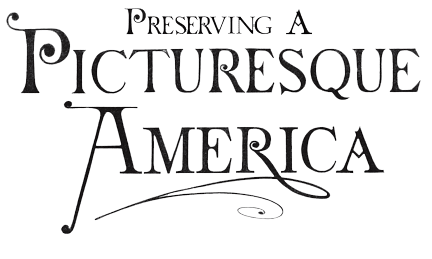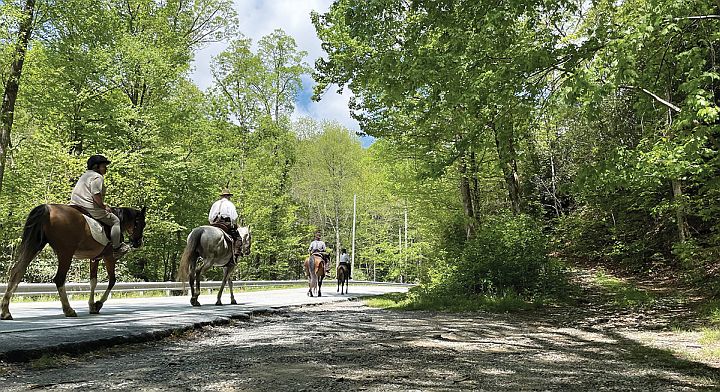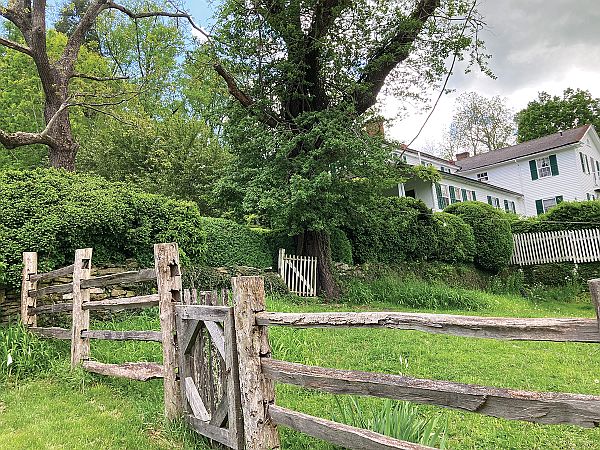
History Feature: Retracing the ‘Much Traveled’ Drovers Road
By Lauren Stepp
The year is 1835, and Sherrill’s Tavern smells of cider and swine. Bedford Sherrill, an enterprising man who purchased acreage in the Hickory Nut Gorge months prior, is peddling apple cider to weary travelers while cows listlessly chew feed outside. At face value, this place is nothing more than a countryside alehouse where mountain folk fill their stomachs and sleep off the day. But history suggests that Sherrill’s Tavern, a landmark located along what locals called Drovers Road, made commerce viable for Western North Carolina.
“When the drovers wanted to rest overnight, they needed someplace to put their stock so the hogs and cattle wouldn’t wander off,” says Dumont Clarke, owner of what is today known as Sherrill’s Inn in Fairview. His grandparents, James and Elizabeth McClure, acquired the property in 1916. “Of course, the men needed a meal to eat and somewhere to sleep too,” he says.
Sherrill’s Tavern was one of few hostels, or “stands,” situated on Drovers Road, a winding and muddy turnpike running from Fairview to Bat Cave. From the early 1800s until 1885, farmers used this thoroughfare to drive herds of cattle, hogs, mules and even turkeys from isolated mountain coves to the foothills. It was a strenuous trek that, by nature of navigating the Hickory Nut Gorge, dropped almost 2,000 feet in elevation.
In an 1830 report, local doctor John Harris offers mixed reviews of the road, noting both its natural allure and dangers. He writes that the “much traveled” road presents a fair passageway through “an exceedingly rough country, rendered doubly interesting by the bold and majestic mountain scenery.” In short, Drovers Road was treacherous but necessary.
“Anybody who has taken that crazy, windy road knows there is no other path to get through there,” says Scott “Doc” Varn. “It was certainly the way of commerce—the main artery—because of the geography limiting the passage.”
Varn is co-founder of Preserving a Picturesque America (PAPA), an organization dedicated to revisiting sites depicted in Picturesque America, a series of books illustrating the scenery of the United States in the 1800s. Earlier this year, Varn traveled by foot and horseback along what is now Highway 74A, a paved two-lane road that loosely follows the historic Drovers Road. He paused at both Sherrill’s Inn and Bearwallow Baptist Church, a structure in Gerton where Picturesque America contributor Harry Fenn likely sought refuge in the latter half of the 19th century.
But when Fenn waded into these wild mountains in the 1870s, Drovers Road had changed. Since railways were beginning to spider across North Carolina, fewer farmers were moving livestock by foot. Rather, most traffic on Drovers Road consisted of stagecoaches carrying preachers, lawyers, politicians and prosperous families from farther south. In 1914, Governor Locke Craig allocated money to replace the road with sand and gravel and, in 1923, the road was paved. Still, Clarke recalls stories from a time before.
“When my grandparents first arrived, it was dirt,” he says. “When it was incredibly muddy, they would hire somebody with oxen to pull their car up the mountain. But in a way, the road is becoming more and more historical because there are so few like it today.”


